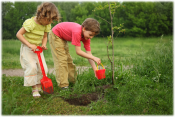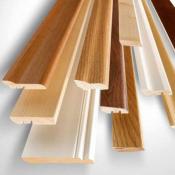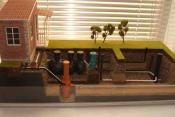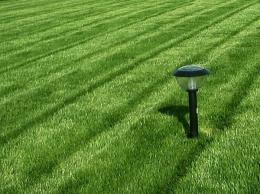Search
Login
Do-it-yourself lawn at the cottage: water sowing the lawn, laying a lawn roll, we plant the lawn with our own hands
The emerald green lawn, uniform and neatly trimmed, emphasizes the beauty of any architectural structure, relaxing and reassuring people. Modern man can not do without communication with nature, and you can make a lawn in almost any area. and this work can be done by anyone, on their own.
Content
- Hydrosowing the lawn
- Sowing lawn grass seeds manually
- Laying the finished roll lawn
- Preparation of a plot for sowing a lawn
- We select and prepare the seeds for sowing
- Sowing seeds
- Making a lawn video video
We will talk about the most affordable methods for creating a lawn.
Hydrosowing the lawn
Hydrosowing is the spraying of an aqueous solution with seeds and fertilizer on the surface of the site.
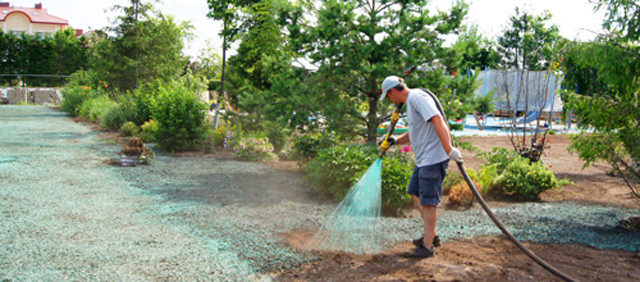
The advantage of this method is the joint processes of applying seeds, fertilizer, first watering and full mechanization.
Disadvantages: a very expensive method of creating a lawn, at the first stage of development, the seeds are susceptible to blowing and destruction by birds.
Sowing lawn grass seeds manually

Sowing lawn grass seeds (seeded lawn) has many advantages:
- sowing of seeds can be made from early spring to late autumn;
- the possibility of selecting an herbal mixture suitable for your conditions;
- mixtures of lawn grass seeds are cleaned of weed seeds;
- a seeded lawn is much more durable than a rolled lawn;
- This is the cheapest way to create a lawn.
Disadvantages:
- additional measures are needed to protect young seedlings (birds, animals, etc.);
- 1.5 months will pass from sowing to the formation of a normal lawn, and all this time it is necessary to irrigate, mow, and fertilize.
Laying the finished roll lawn

This is the fastest way to get a lawn with clear boundaries.
Its disadvantages:
- good quality turf is a rarity, as the proposed turf mainly contains a large percentage of weeds;
- before laying the turf, it is necessary to thoroughly clean the soil from weeds, level the site, in order to avoid the formation of air chambers;
- the topsoil should be close in composition to the soil of the roll;
- short terms of flooring of a rolled lawn (1-2 days);
- a very time-consuming process, the turf is folded into heavy volume rolls;
- the cost of turf is more expensive than the cost of seeds.
Based on this information, let us dwell on the most effective way to create a lawn - sowing seeds manually.
Preparation of a plot for sowing a lawn
Remove all construction debris and all unnecessary items from the site.
Root out stumps, remove all overgrowth of trees and shrubs.
Destroy weeds mechanically or chemically. With the chemical method of removal, treat the weeds with continuous herbicides (roundal, dalapon, raglon).
These preparations do not decompose in the soil immediately, they remain effective for several days, so sow the seeds of the lawn at the specified time on this chemical.
Create a flat surface on the site, plan the site.

In areas where water stagnates, it is necessary to lay a drain.
To create drainage, the fertile soil layer is removed, a layer of gravel, 10-15 cm high, is laid on infertile soil and well compacted.
Then a sand layer 5-10 cm high is laid. It is also compacted. After these operations, the removed fertile soil layer returns to its place.
Thus, the soil profile will look like this:

- 15-20 cm. Fertile layer;
- 5-10 cm. Layer of sand;
- 10-15 cm. Gravel;
- further the barren soil.
If necessary, create an intra-soil irrigation system.
If possible, take measures to improve the structure of the soil. To do this, add sand (5-15 kg. Per square meter) on heavy clay soils and mix it with soil, and on light sandy soils, peat or manure is introduced and also mixed with the soil.
In order to improve general fertility, on soils that are not rich in nutrients, it is recommended that before digging or plowing, make the main fertilizer containing all the nutrients necessary for plants.

Plowing or digging is one of the most necessary measures when preparing the soil before sowing. It helps to improve the water-air regime of the soil, loosening to a depth of 25 cm, mixing the fertilizer applied.
The last step in preparing the soil before sowing is loosening and at the same time leveling the top layer. After plowing, many experts recommend sowing green grass, which is used as a green fertilizer.
We select and prepare the seeds for sowing
At the end of soil preparation, we select the seeds of lawn grass. the following recommendations are taken into account:
- Do not create a lawn from one type of grass, as any soil or weather factor can destroy the entire lawn in one season.
Create a lawn of 3-5 mutually complementary types of grass, thereby you get a fairly durable lawn;
- buy an herbal mixture suitable for your soil type;
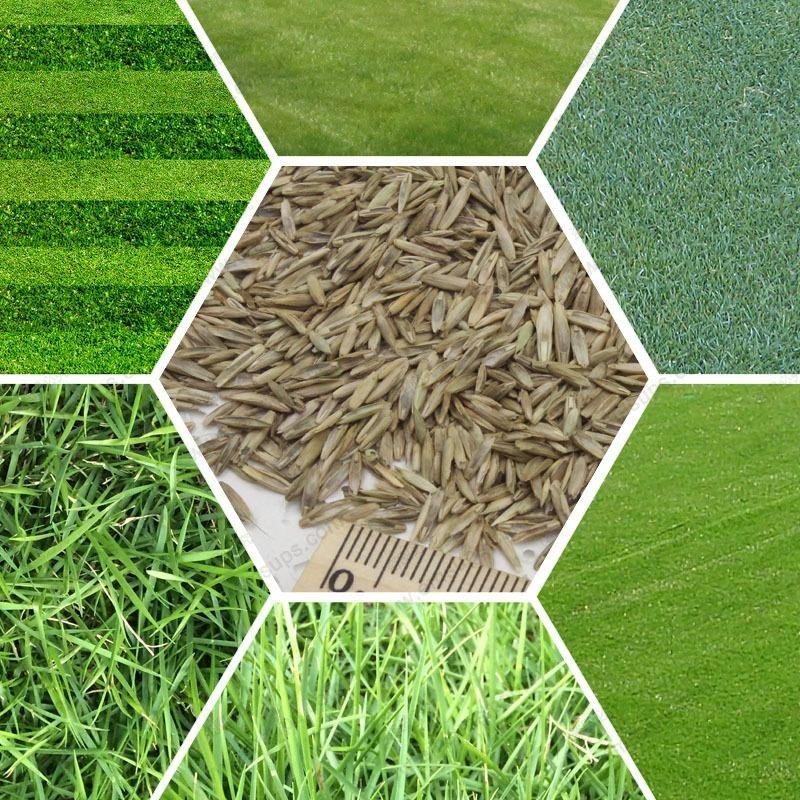
- choose a grass mixture consisting only of varieties of perennial grasses of lawn breeding, the presence of feed varieties is absolutely unacceptable.
The most common grasses for creating lawns are:

meadow bluegrass;

pasture grass;

red fescue;
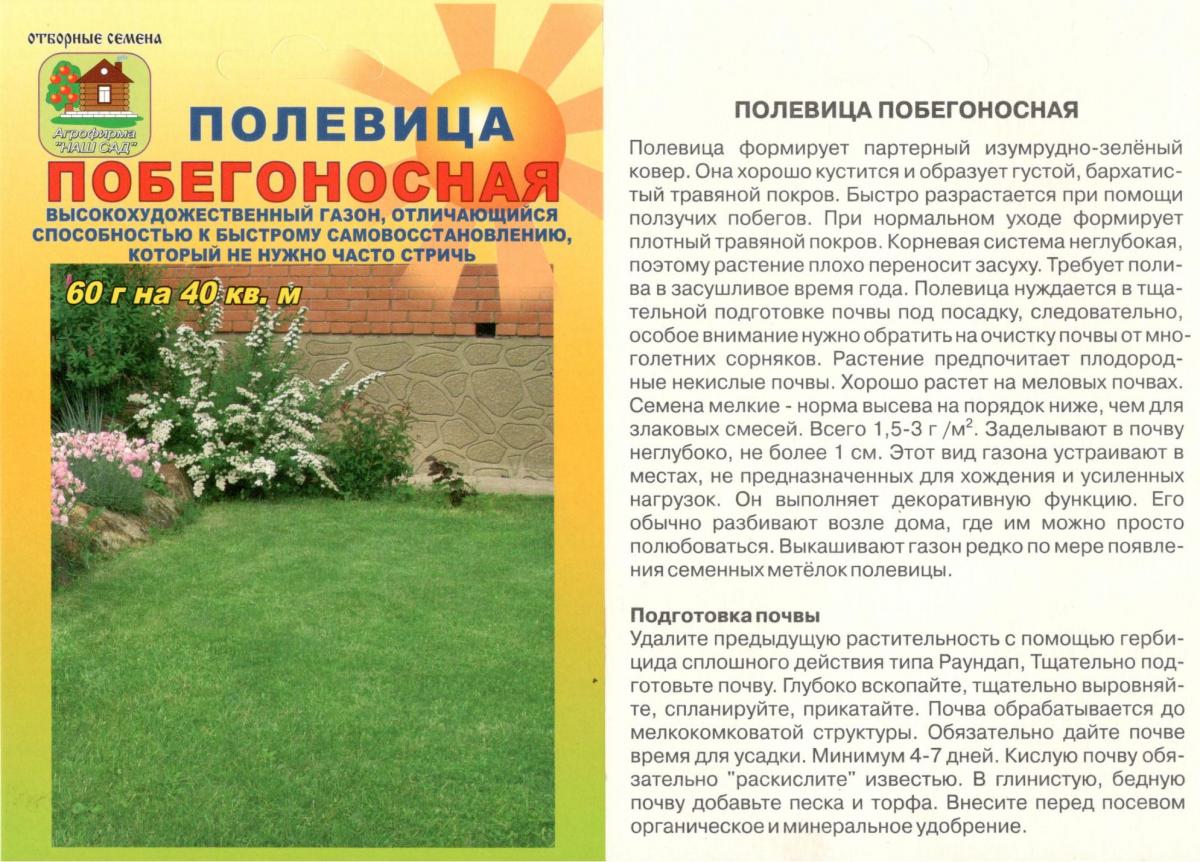
polevozhnaya shoot.
The various properties of these herbs, when mixed in a certain proportion, allows you to get high-quality lawns in any soil and climate zones. Do not try to make a mixture of grass for the lawn yourself, as there are ready-made seed mixtures for lawns of different types, for different soils and conditions.
Widespread in Russia, received high-quality mixtures of German producers, they use seeds grown in Denmark, Canada, USA and Germany. These mixtures give excellent results in various regions of Russia. Sowing is best done in spring or autumn, when the soil is moist and warm, but it is possible in the summer, provided that watering is provided.
Sowing seeds
It is necessary that before the onset of frost, the grass has time to grow to a height of 10 cm.
The seeding rate depends on the conditions on the site and the type of herbal mixture, an average of 30-50 gr. per square meter.
Moreover, on light soils, the seeding rate is less - 30-40 gr. per square meter.
On heavy soils 40-50 gr. per square meter.
If the soil is lean, additionally spread the starting fertilizer on the surface before sowing.

Sow in calm weather, at the end of loosening the soil, leveling its surface and compacting the top layer of the soil, using an ice rink, a wide board or a sheet of plywood. Use a fan or ordinary rake to lightly loosen the topsoil to a depth of 3 cm, divide the seed mixture into two equal parts, spread one part with your hands on the surface, passing along the site, the other across.

Also, sowing seeds can be done using a manual seeder.

To protect against wind and birds, sprinkle the seeds with a layer of earth or peat from 0.5 to 2 cm high. Lightly compact. The last event when sowing seeds is watering.

Do this in the evening, water abundantly, do not allow the formation of puddles, use drip irrigation or sprinkling.
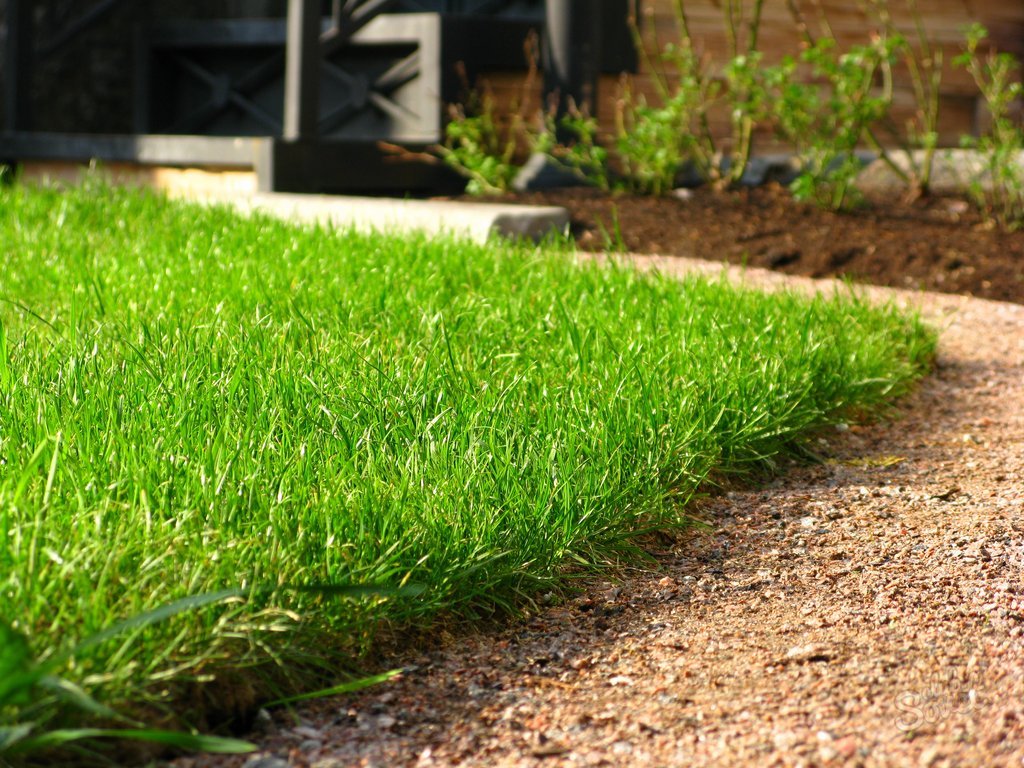
A more friendly seed germination is obtained when covering sown areas with lutrasil
